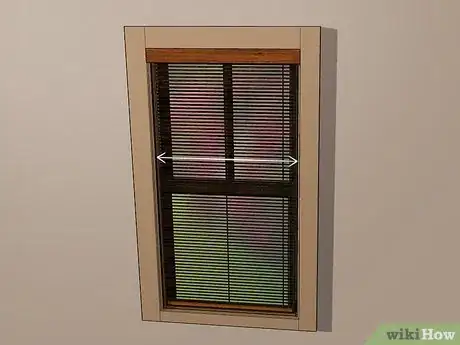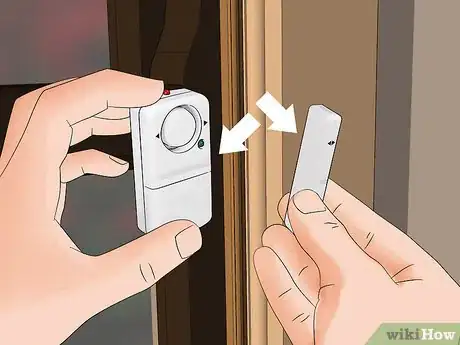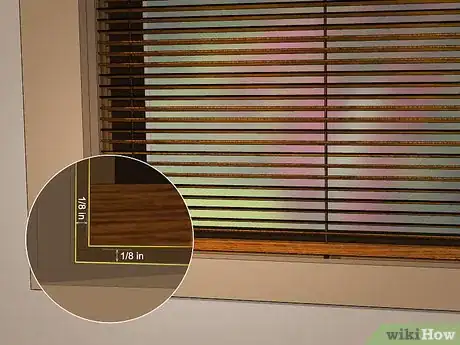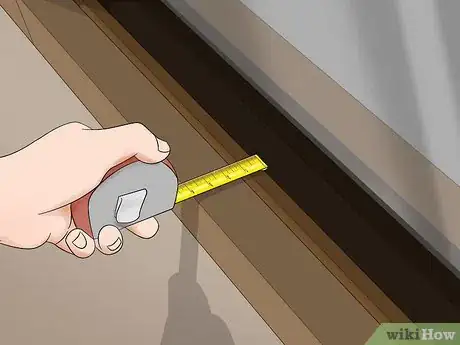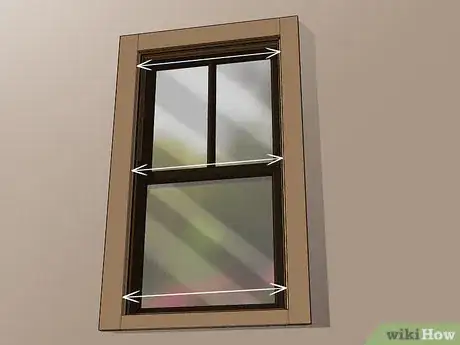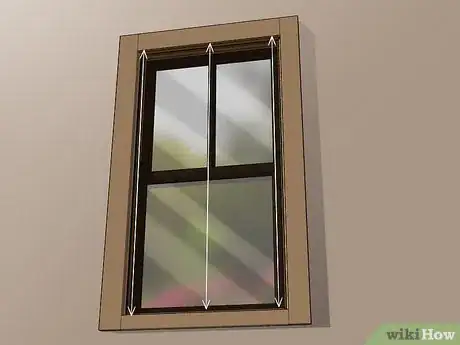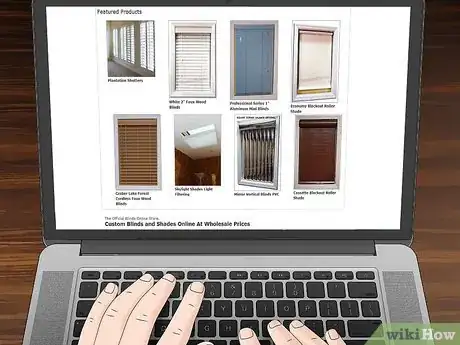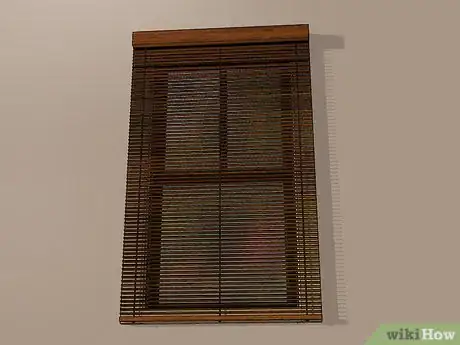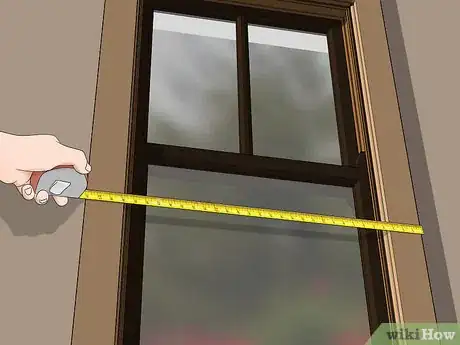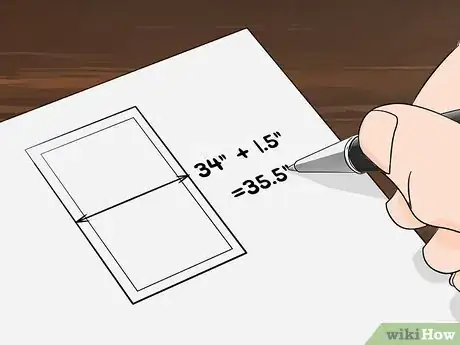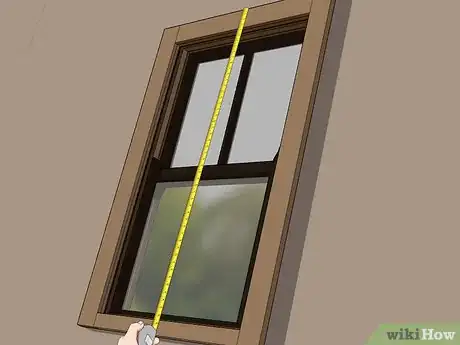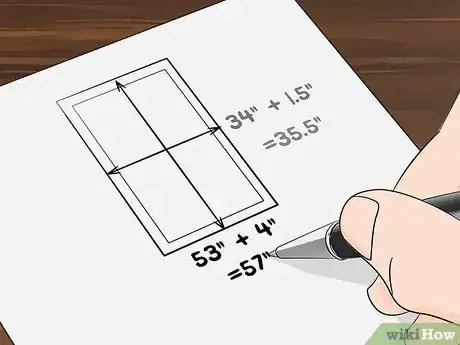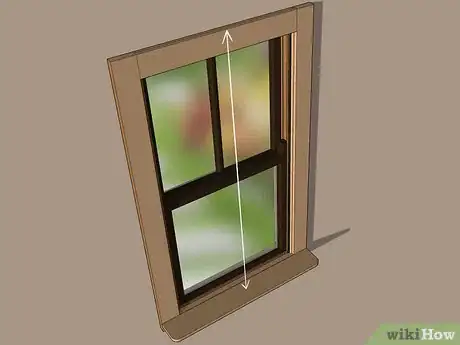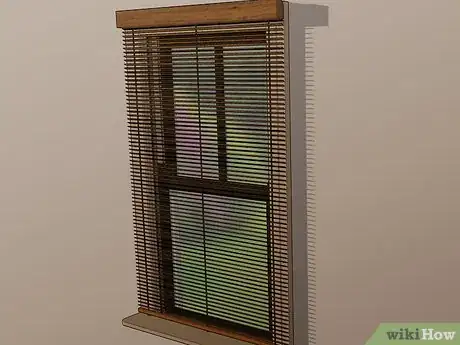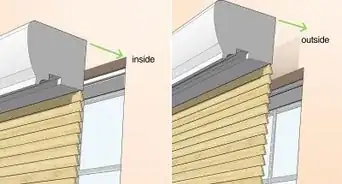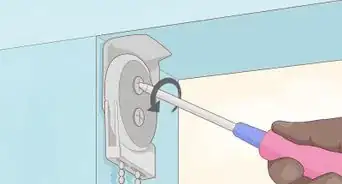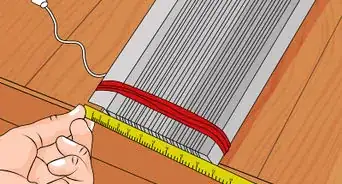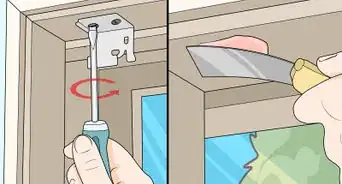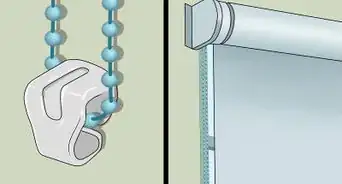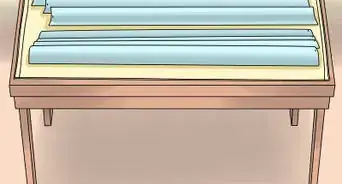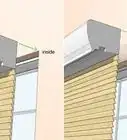This article was co-authored by wikiHow Staff. Our trained team of editors and researchers validate articles for accuracy and comprehensiveness. wikiHow's Content Management Team carefully monitors the work from our editorial staff to ensure that each article is backed by trusted research and meets our high quality standards.
There are 9 references cited in this article, which can be found at the bottom of the page.
This article has been viewed 17,065 times.
Learn more...
Mini blinds, or Venetian blinds, are a great way to add some personality to your windows. Mini blinds also block out the sun and can prevent people from looking into your house. If you want to get the right sized mini blinds, it’s important that you determine the right measurement so that they fit properly. Luckily, measuring for mini blinds can be easy to do with a tape measure, pen or pencil, and piece of paper.
Steps
Measuring for Inside-Mounted Mini Blinds
-
1Go with inside-mounted mini blinds for an uncluttered look. Inside-mounted mini blinds hang on the inside of the window trim and give windows a nice, neat appearance. Your window trim will usually need a depth of at least 2–3 inches (5.1–7.6 cm). If the depth of your window trim is less than this, you may have to install outside-mounted mini blinds instead.[1]
- The blind’s product manual will list the required depth for your mini blinds.[2]
-
2Remove anything that would block your mini blinds. Look at the inside of your window trim and remove obstructions that could block the blinds, such as hooks, window cranks, or alarm sensors. Remove them, if possible. If these things are permanently installed, they may obstruct your blinds from being able to open or close.[3]Advertisement
-
3Round your measurements to the closest 1⁄8 inch (0.32 cm). Mini blind sizes are in 1⁄8 inch (0.32 cm) increments. To find blinds that fit your window, you'll take measurements for the depth, width, and height of your window, then round them to the closest 1⁄8 inch (0.32 cm).[4]
-
4Use a tape measure to determine the depth of your window. Use a metallic or steel tape measure, if possible. Hold the tape measure against the left or right side of the window pane, then measure out to the edge of the wall or window trim to determine the depth of your window. Write down your measurement on a piece of paper.
-
5Measure the width of your window on the top, middle, and bottom. Hold the tape measure on the top left edge of the window trim, then measure across to the top right edge of the window trim. If your windows don’t have trim, measure the window itself. Then, take down 2 more measurements across the middle and bottom edge of the window.[5]
- Some windows aren’t perfectly straight, so measuring the window in different spots helps you get the most accurate measurement.
-
6Measure the height down the middle, left, and right sides. This measurement is usually referred to as the length of the blinds. Take your measurements the same way you did for the width of the window, but this time take vertical measurements. Write all 3 measurements down on a piece of paper.[6]
-
7Select the shortest width and height measurements. Look at the measurements you wrote down for the height and width of your windows, and select the smallest one for each. This will ensure that you don’t purchase blinds that rub against the sides of your window trim.[7]
-
8Order blinds that fit your measurements. Now that you have the measurements for your mini blinds, you can look online or at a furniture store for the right sized interior-hanging blinds. Purchase and install them when you're ready.
Measuring for Outside-Mounted Mini Blinds
-
1Use outside-mounted mini blinds to make windows appear larger. Outside-mounted blinds refer to blinds that are attached to the outside of the window trim or wall around the window. Consider using outside-mounted blinds if your windows aren't deep enough for interior blinds, if there are obstructions on your window trim, or if you prefer the style of exterior-mounted blinds.[8]
- Exterior-mounted window blinds may be better at blocking out the sun than interior mounted blinds.
-
2Round your measurements to the closest 1⁄8 inch (0.32 cm). Mini blind sizes are usually rounded to the closest 1⁄8 inch (0.32 cm). You'll have to take measurements for the height and width of your blinds, and the dimensions for your windowsill. Round your numbers so that you can find mini blinds that fit your windows well.[9]
-
3Measure the width of the window with a metal tape measure. Start from one side of the blinds and pull the tape measure across the width of the window to the other side of the blinds. Record this measurement on a piece of paper.[10]
-
4Add at least 1.5 inches (3.8 cm) to the width measurement. Doing this will allow for .75 inches (1.9 cm) of extra space on the sides of your blinds. If you want even wider blinds, add more to that number. Since exterior blinds hang on the outside of your window trim, you want to get blinds that are large enough to overlap over the wall. Write down the final measurement on a piece of paper.[11]
-
5Measure the height of the blinds. Go to the top left corner of the window trim and measure down to the bottom left corner of the window. If you want your blinds to hang all the way down to the floor, pull the tape measure down to the floor and record that measurement.
-
6Add at least 4 inches (10 cm) to the height. Once you get that measurement, add at least 4 inches (10 cm) to compensate for the height of the window bracket that will attach to the wall above the window. Some window brackets may be larger, so make sure to read the product description so you know how tall your bracket is. Record the final measurement on a piece of paper.[12]
-
7Measure from the top of the window to the top of the windowsill. If you have a windowsill, you’ll want to make sure that you don’t get blinds that hang lower than the sill. Measure from the top of your windowsill and hold the tape measure on the top of the window. Write the measurement down on a piece of paper.[13]
-
8Purchase blinds that fall within your measurements. Now that you know how large your blinds have to be, you can look for exterior-hanging blinds that match your window's measurements. You have more flexibility with exterior hanging blinds because they aren't restricted by your window trim, and you can purchase blinds that are much bigger than your actual window. Once you find blinds that you like and that fit within your measurements, you can purchase and install them.
Things You’ll Need
- Pencil or pen
- Paper
- Metallic measuring tape
References
- ↑ https://www.youtube.com/watch?v=9NNOCS3kKJU&feature=youtu.be&t=23s
- ↑ https://www.youtube.com/watch?v=xFCylEj_pzs&feature=youtu.be&t=1m53s
- ↑ https://www.youtube.com/watch?v=KSZ9RLI7KtE&feature=youtu.be&t=17s
- ↑ http://videos.blinds.com/v/32449/bali-how-to-measure-for-outside-mount-vertical-blinds-and-sliding-panels/
- ↑ https://www.selectblinds.com/measure/measure-mini-blinds.html#insidemount
- ↑ https://www.youtube.com/watch?v=KSZ9RLI7KtE&feature=youtu.be&t=1m39s
- ↑ https://www.youtube.com/watch?v=KSZ9RLI7KtE&feature=youtu.be&t=2m2s
- ↑ http://videos.blinds.com/v/32449/bali-how-to-measure-for-outside-mount-vertical-blinds-and-sliding-panels/
- ↑ http://videos.blinds.com/v/32449/bali-how-to-measure-for-outside-mount-vertical-blinds-and-sliding-panels/
- ↑ http://www.mariak.com/images/pdf/MINI%20BLINDS%20How-to-Measure%202012.pdf
- ↑ http://www.mariak.com/images/pdf/MINI%20BLINDS%20How-to-Measure%202012.pdf
- ↑ https://www.selectblinds.com/measure/measure-mini-blinds.html#outsidemount
- ↑ http://www.mariak.com/images/pdf/MINI%20BLINDS%20How-to-Measure%202012.pdf
